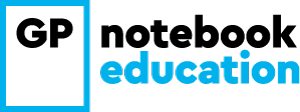Recent years have seen a number of new drugs become available for the management of type 2 diabetes, and emerging evidence suggests that many of these agents have benefits beyond their effects on blood glucose control.
Currently, NICE, the American Diabetes Association and the European Association for the Study of Diabetes all recommend metformin as the first-line antidiabetes drug of choice, in conjunction with diet and lifestyle modification. However, if this fails to keep HbA1c at target levels, the question of which medication should be added is more complex.
Reminder: What comes BEFORE metformin is also important
Readers are reminded that healthcare professionals play an important role in the management of type 2 diabetes long before they need to prescribe metformin. Specifically, they should confirm the diagnosis of type 2 diabetes (diabetes is commonly misclassified at diagnosis, which can lead to the wrong treatment; see our previous GPnotebook Shortcut on diagnosis). Providing information and support to lose weight and increase physical activity is the first port of call in managing type 2 diabetes, and newly diagnosed individuals may be encouraged to learn that the condition can be put into remission with sufficient and sustained weight loss (Lean et al, 2019). Finally, reduction of other risk factors, such as blood pressure and cholesterol, should also be considered and appropriate medications offered.
What next after metformin?
The decision of which agent to add to metformin therapy should be made in collaboration with the person with diabetes and in accordance with their needs. A host of factors need to be considered, including the individual’s health status, priorities, comorbidities and other medications, as well as the new drug’s cautions and contraindications, side effects, and beneficial effects beyond glucose lowering.
With so many factors to consider, the GPnotebook Shortcut overleaf will help guide the choice of agent after metformin to ensure that the benefits outweigh the potential harm.

GPnotebook Shortcuts
GPnotebook Shortcuts are a series of easily digestible, bite-sized resources to help clinicians manage their patients in primary care. A full list of Shortcuts can be found here.
GPnotebook Education
GPnotebook Education is an independent educational resource which has been created with primary care professionals in mind and mirrors the daily work in primary care, using multiple patient case studies to cover latest clinical guidance, research and hot topics.
All GPnotebook Education courses provide unbiased, independent content, prepared and presented by fellow healthcare professionals. Visit gpnotebookeducation.com to learn more.





Jane Diggle discusses emotional health and diabetes distress, and offers some tips for discussing this in our consultations.
11 Nov 2025